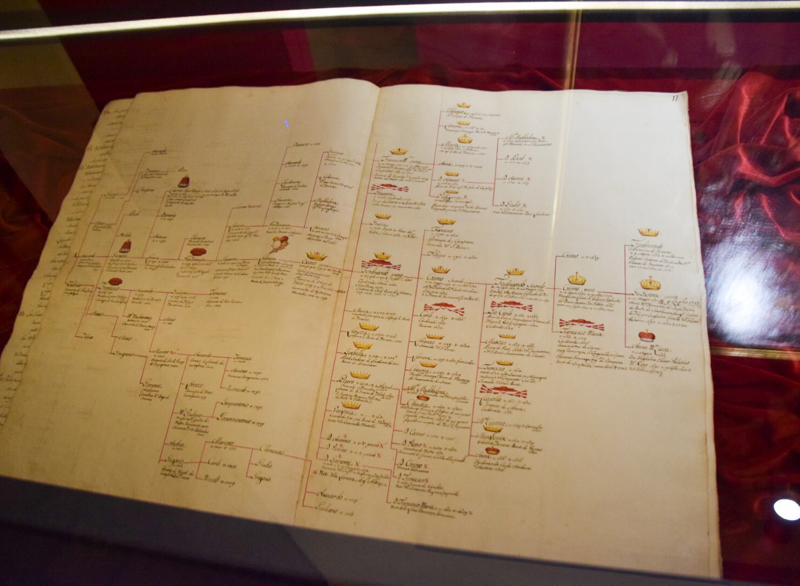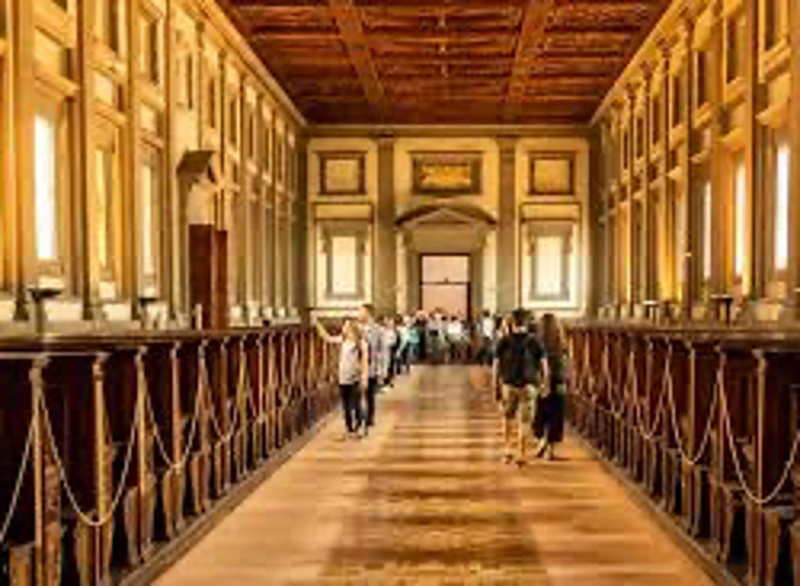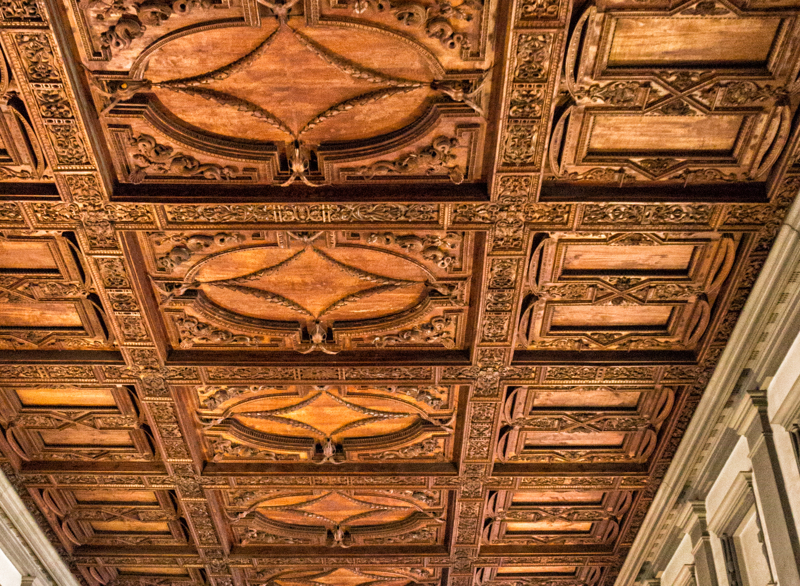Florentine Renaissance
Dear Mom,
What is one word that has all five vowels in it, and can take you anywhere you want to go? EDUCATION. Please pass that along to my sister, for I traveled to the Biblioteca Medicea Laurenziana today and the amount of ancient manuscripts were off the chain, no pun intended.(1) The facade of the building was unfinished and lackluster, but the inside was the opposite. The ricetto, as it was called by other patrons, was complete with a colossal staircase made of pietra del Fossato, the best stone. My eyes couldn’t keep up with the Greek and Roman influence as I was overjoyed with the abundant columns, pediments, friezes, and tabernacles. The height of the room made me like I was moving upward. The columns and tabernacles were inverted in such a way that my eyes had no choice but to progress to the ceiling.(2) The walls were white, and according to a nearby patron named Enzo, they were made of stucco. Everything was bedecked in stone, so the strips and elements crafted in bluish-gray pietra del Fossato didn’t take away from the general startle of the area. As a result, I turned to the staircase for an escape.(3)
1. Kenneth Setton, "From Medieval to Modern Library," Proceedings of the American Philosophical Society 104, no. 4 (1960): 385, http://www.jstor.org/stable/985616.
2. Rudolph Wittkower, "Michelangelo’s Biblioteca Laurenziana," The Art Bulletin 16, no. 2 (1934): 147-9, https://doi.org/10.2307/3045530.
3. Setton, “From Medieval to Modern Library,” 375.
Austin Lester
7 chapters
16 Nov 2023
Biblioteca Medicea Laurenziana
Florence
Dear Mom,
What is one word that has all five vowels in it, and can take you anywhere you want to go? EDUCATION. Please pass that along to my sister, for I traveled to the Biblioteca Medicea Laurenziana today and the amount of ancient manuscripts were off the chain, no pun intended.(1) The facade of the building was unfinished and lackluster, but the inside was the opposite. The ricetto, as it was called by other patrons, was complete with a colossal staircase made of pietra del Fossato, the best stone. My eyes couldn’t keep up with the Greek and Roman influence as I was overjoyed with the abundant columns, pediments, friezes, and tabernacles. The height of the room made me like I was moving upward. The columns and tabernacles were inverted in such a way that my eyes had no choice but to progress to the ceiling.(2) The walls were white, and according to a nearby patron named Enzo, they were made of stucco. Everything was bedecked in stone, so the strips and elements crafted in bluish-gray pietra del Fossato didn’t take away from the general startle of the area. As a result, I turned to the staircase for an escape.(3)
1. Kenneth Setton, "From Medieval to Modern Library," Proceedings of the American Philosophical Society 104, no. 4 (1960): 385, http://www.jstor.org/stable/985616.
2. Rudolph Wittkower, "Michelangelo’s Biblioteca Laurenziana," The Art Bulletin 16, no. 2 (1934): 147-9, https://doi.org/10.2307/3045530.
3. Setton, “From Medieval to Modern Library,” 375.

Enzo described them as freestanding, while I just saw a disoriented trifecta of more pietra del Fossato. Enzo explained that the middle was made for the pontiff, and to remind patrons like us that we were inferior to the Pope. Subsequently, it was structurally stable and had railings on either side. The outside steps lacked railings, but we went up anyway.(4) And so, Enzo took the left and I took the right. Startled, we met at the top where I closed my eyes and then reopened them, only to see the same desks, ceiling tiles, and beautiful floor pattern I had seen the first time. It’s known as the reading room, but I’d call it a scholar’s heaven.(5) Here lie thousands of books collected during the reign of Cosimo di Giovanni de’ Medici through his friendship with Florentine humanist and scholar, Niccolò Niccoli. Once Niccoli died in 1437, Cosimo took ownership of his manuscripts. The collection of literary work continued with Lorenzo de Medici, the eldest grandson of Cosimo, due to his interest in education. Eventually, the library grew to include hundreds of manuscripts that bear witness to the history of Florence including works by Dante Alighieri and Niccolò Niccoli, as well as the Florentine Codex.(6)
4. James S. Ackerman, The Architecture of Michelangelo (Chicago: University of Chicago Press,
1986), 52-59.
5. Ackerman, The Architecture of Michelangelo, 123.
6. Wittkower, "Michelangelo’s Biblioteca Laurenziana," 157.




Through eavesdropping, I learned the long, sloped desk in two long rows flanking the center aisle were lecterns. Each desk of fine, cured walnut was near windows that were placed at equal distances down the length of the library, known as the stall system.(7) Here, I sat for hours and read. The more manuscripts I encountered, the more finger oil, wear-and-tear, and scribbles I saw. And so, the Biblioteca Medicea Laurenziana, through its evidence of past use and unique architecture, is evidence of Florence’s revival. The library symbolizes the fornication of knowledge and the materials used show historical detail. Each manuscript is an exchange of ideas, and the vestibule, stairs, and reading room are an indication of artistic sponsorship.
7. Setton, “From Medieval to Modern Library,” 378-9.
Share your travel adventures like this!
Create your own travel blog in one step
Share with friends and family to follow your journey
Easy set up, no technical knowledge needed and unlimited storage!